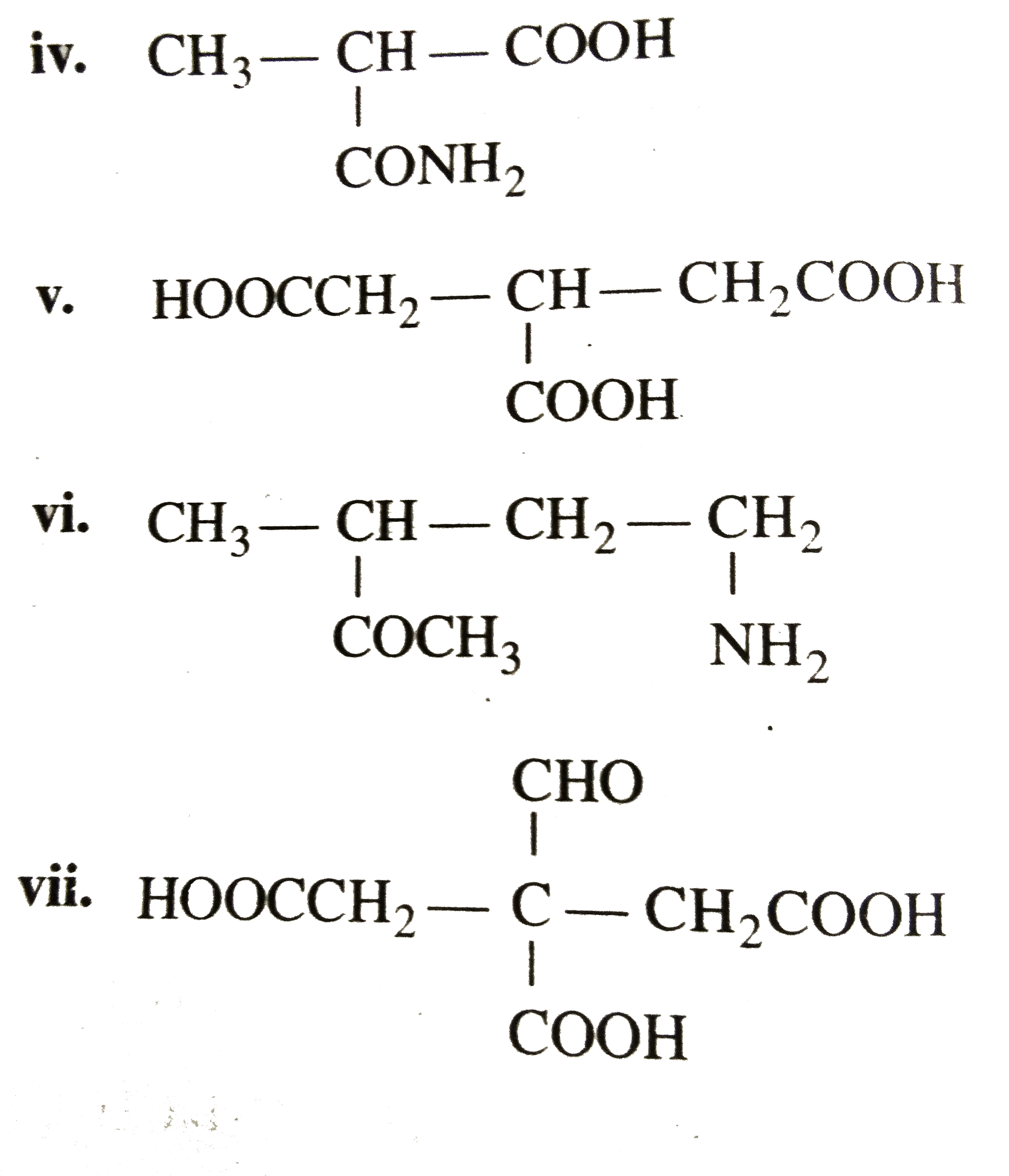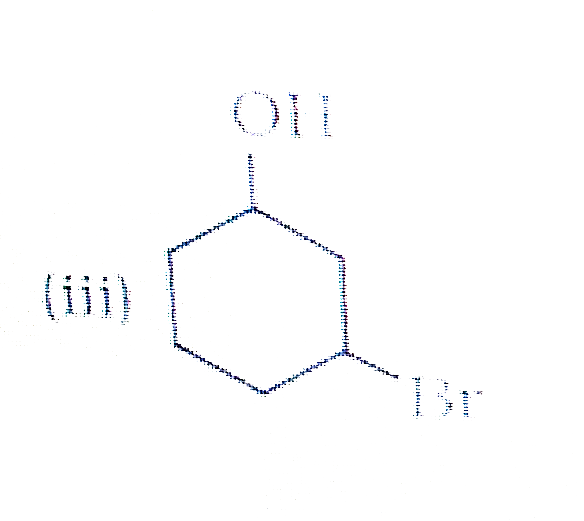CH3CH2CH2OHconc. H2SO4−−−−−−−−→170∘CACl2−−−→500∘CB.
A and B. are
A=CH3CH2CH3,B=CH3CH2CH2Cl
A=CH3CH=CH2,B=CH2ClCH=CH2
A=CH2=CH2,B=CH3CH2Cl
A=CH3CH2CH3,B=CH3CH=CH2
The correct Answer is:B
To solve the question, we need to identify the compounds A and B formed from the given reaction of propanol with concentrated sulfuric acid and then with chlorine gas.
Step 1: Identify the starting compound
The starting compound is propan-1-ol (CH₃CH₂CH₂OH), which is a three-carbon alcohol.
Step 2: Reaction with concentrated sulfuric acid
When propan-1-ol (CH₃CH₂CH₂OH) reacts with concentrated sulfuric acid (H₂SO₄) at 170°C, it undergoes dehydration. This means that a water molecule (H₂O) is eliminated from the alcohol.
The dehydration reaction can be represented as follows:
- The hydroxyl group (OH) from the alcohol and a hydrogen atom (H) from the adjacent carbon are removed, resulting in the formation of a double bond between the two carbon atoms.
The reaction can be summarized as:
CH3CH2CH2OHH2SO4,170∘C−−−−−−−−→CH3CH=CH2+H2O
Thus, the product A is propene (CH₃CH=CH₂).
Step 3: Reaction with chlorine gas
Next, compound A (propene) reacts with chlorine gas (Cl₂) at 500°C. This reaction is known as allylic halogenation, where the chlorine atom adds to the allylic position (the carbon adjacent to the double bond).
The reaction can be represented as:
CH3CH=CH2+Cl2500∘C−−−→CH2ClCH=CH2
The product B formed is allyl chloride (CH₂ClCH=CH₂).
Conclusion
- Compound A is propene (CH₃CH=CH₂).
- Compound B is allyl chloride (CH₂ClCH=CH₂).
Summary of the answer:
- A = Propene (C₃H₆)
- B = Allyl chloride (C₃H₅Cl)
The starting compound is propan-1-ol (CH₃CH₂CH₂OH), which is a three-carbon alcohol.
When propan-1-ol (CH₃CH₂CH₂OH) reacts with concentrated sulfuric acid (H₂SO₄) at 170°C, it undergoes dehydration. This means that a water molecule (H₂O) is eliminated from the alcohol.
- The hydroxyl group (OH) from the alcohol and a hydrogen atom (H) from the adjacent carbon are removed, resulting in the formation of a double bond between the two carbon atoms.
CH3CH2CH2OHH2SO4,170∘C−−−−−−−−→CH3CH=CH2+H2O
Next, compound A (propene) reacts with chlorine gas (Cl₂) at 500°C. This reaction is known as allylic halogenation, where the chlorine atom adds to the allylic position (the carbon adjacent to the double bond).
CH3CH=CH2+Cl2500∘C−−−→CH2ClCH=CH2
- Compound A is propene (CH₃CH=CH₂).
- Compound B is allyl chloride (CH₂ClCH=CH₂).
- A = Propene (C₃H₆)
- B = Allyl chloride (C₃H₅Cl)
Topper's Solved these Questions
- HYDROCARBONS BOOK - NCERT FINGERTPS ENGLISHCHAPTER - HYDROCARBONS EXERCISE - Higher Order Thinkin Skills
7 Videos
- HYDROCARBONS BOOK - NCERT FINGERTPS ENGLISHCHAPTER - HYDROCARBONS EXERCISE - Assertion & Reason
15 Videos
- EQUILIBRIUM BOOK - NCERT FINGERTPS ENGLISHCHAPTER - EQUILIBRIUM EXERCISE - Assertion And Reason
15 Videos
- HYDROGEN BOOK - NCERT FINGERTPS ENGLISHCHAPTER - HYDROGEN EXERCISE - Assertion And Reason
15 Videos
Similar Questions
Knowledge Check
In this reaction , (CH3)3C−CH2OHConc.H2SO4−−−−−−−−→170∘CX
X isA(CH3)2C=CHCH3BCH3≡CHC(CH3)2CHCH2CH3DCH3−CH2−C∣CH3=CH2Identify the compound C in the following sequence:
(CH3)2CHCH2C≡NHCl,H2O−−−−−→compound A1.LiAlH4−−−−−→2.H2Ocompound BPC−−−−→CH2Cl2Compound CA(CH3)2CHO∣∣CCH3B(CH3)2CHCH2O∣∣COHC(CH3)2CHCH2O∣∣CHD(CH3)2CHO∣∣CCH2OH
Given the IUPAC names of the following compounds:
(i) CH3CH2CH2CH3C∣∣C2H5CH2−CH3∣C=CH2
(ii) CH3−CH3CH−C≡CH
(iii) C6H5−CH=CH−CH2Cl
CH3CH−CH−CH2Cl
(iv) CH3CH=CH−CH2Br
v CH2=CH−Cl∣C−CH=CH2
vi CH2=CH−CH2CH3C∣H−C∣Cl=CH2
vii. (CH3)3C−CH=CH2
View SolutionGive the IUPAC names for the following polyfunctional compounds:
i. CH3CH2O−CH2−CHOH−CH3
ii. CH3−C∣NO2H−CH2−CH3∣C∣OH−CH3
iii. CH2=H3C∣C−OH∣CH−CH2CN

View SolutionThe correct IUPAC name of the following compound is :
CH3CH2−C∣CH3H−CH=C∣C2H5−C2H5∣CH−CH2−CH2−CH2−CH3
View SolutionCH3−CH3∣C∣CH3−CH=CH−CH3H−Cl−−−→ ?
View SolutionName the following compounds according to IUPAC system.
(i) CH3−CH2−C | CH2ClH−CH2OH| C H−C| CH3H−CH3 (ii) CH3−C | CH3H−CH2−C | OHH−CH2OH| C H−CH3
(iii)
(iv) H2C=CH−C | OHH−CH2−CH2−CH3 (v) CH3−C | CH3=C | Br−CH2OH
View SolutionConsider the given reaction
CH3−CH3∣C∣CH3−CH2−OHconc.H2SO4−−−−−−→ΔAlkene(major)
Identify alkene.
View Solution
